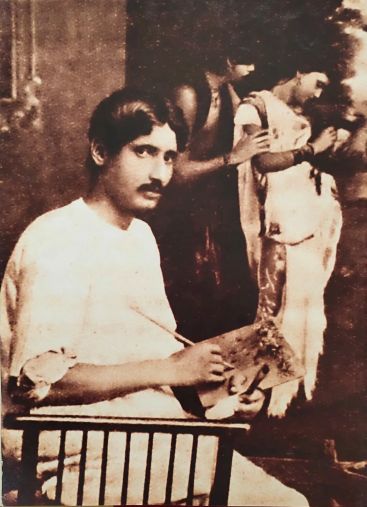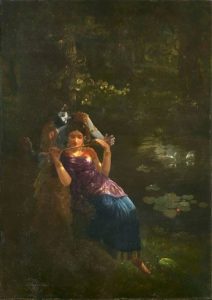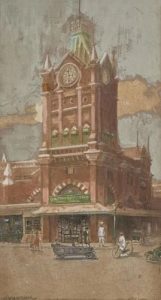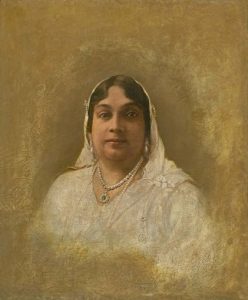Between Bengal and the World: The Journey of Hemen Mazumdar

Hemendranath Mazumdar
Sneha Gautam
Ever so often, the story of an artist emerges not just through biographies or archives, but through the works that continue to surface, captivate, and inspire. On the birth anniversary of Hemendranath “Hemen” Mazumdar (1894–1948), one is reminded of a painter who balanced the intimacy of Bengal’s cultural ethos with a broader, universal language of art. His journey reflects both the rootedness of place and the reach of global modernity, a narrative that remains compelling to this day.
Early Life
Born in 1894 in Gachihata, a village situated in the Kishoreganj District part of erstwhile Bengal (now Bangladesh), Hemendranath Mazumdar grew up in a prosperous family respected for their unwavering devotion to religious pursuits. Inclined towards art since his early years, including a passion for photography when it was not commonplace. Reprimanded by his father and elder brothers, who perceived his love for art only as a vocational hobby and expected him to follow the conventional career path of a barrister, doctor, or accountant, Hemendranath ran away to Kolkata to follow his calling. This would not be the only instance when his artistic ambition would lead to defiance.
He secured a place at the Government School of Art, but the institution soon fell short of Mazumdar’s expectations. The module rooted in the ethos of situating traditional Indian art as a basis for every course clashed with Hemendranath’s innate desire to pursue the technique of Western Academism. This dissatisfaction turned into a full-blown rebellion during a beautification project in the city for the arrival of King George V. Protesting against the pittance wager in lieu of the meticulous undertaking, Hemendranath Mazumdar, with other students, was suspended. When the college withdrew the decree, he decided not to return. He then joined a private art school but remained restlessly disappointed. A solace came through the works of distinguished British artists, witnessed in various books.
Growing as an Artist
In 1919, collaborating with his close artist friends, including Atul Bose, Jamini Roy, and Jogesh Chandra Seal, he founded the Indian Academy of Art, poised as a challenger to Rupam magazine, spearheaded by Orientalist artists. In 1929, he launched ‘Shilpi,’ a literary platform to debate the contradictions of Oriental and Occidental Art. Unlike many contemporaries committed to a purely nationalist idiom, Mazumdar found his voice in the textures of flesh, fabric, and light. His figures—often women draped in translucent saris or mythological characters bathed in moonlight—carried both sensuality and poignancy. This duality of realism and mood became his signature, placing him apart from his peers. An ambitious publication, the ‘Indian Masters,’ included one of the earliest experiments with the wet-saree effect that came to be known as his signature style.
Despite having carved a niche for himself in Bengali society, a creative dissonance prompted Mazumdar to submit works to faraway locations. Before long, he had gained critical validation, catapulted by the monumental three consecutive wins at the Bombay Art Society annual exhibition. These acknowledgements ushered in an era where the artist became highly sought after by princely courts in India. “I have come in contact with many good painters in Bombay and seen their works, but Mr Mazumdar stands first among each and all of them,” wrote the Maharaja of Jamnagar Ranjit Singh in a note of appreciation.
During his stint as Court Artist for the Patiala Royal Court beginning in 1932, several other neighbouring royal Rajputana patrons, including the kings of Jaipur, Jodhpur, and Bikaner, also acquired his paintings. Mazumdar returned to Kolkata in 1938 and set up a studio at Beadon Street. He also began to showcase works with his contemporaries, such as Nandalal Bose, and Gaganendranath Tagore, at local exhibitions.
With World War II inching closer to Kolkata through Japanese attacks, the artist returned to the comfort of his native village Gachihata in 1941. This time amidst the abundance of nature resulted in a transformative period towards the end of his career when figures of simple underprivileged people began to replace the hitherto opulent scenes in his works. An exhibition in Kolkata exhibiting many of his works executed at Gachihata was held in Kolkata in 1948. The artist passed away soon after this exhibition.
Art that Defies Age
Mazumdar’s work is still relevant decades after his death because of its emotional resonance as well as its technical mastery. His art’s enduring appeal is demonstrated by the fact that it frequently appears at significant auctions. His more personal sketches and drawings as well as his larger, eye-catching canvases that portray romantic and mythological themes are what attract collectors. Generations to come will continue to desire his works because of his ability to convey mood through form, texture, and light.
On the anniversary of Hemen Mazumdar’s birth, we see an artist who defied classification. His art challenges us to examine it more closely to understand not only the mastery of his technique but also the subdued poetry evoked through his figures. It is situated between Bengal’s cultural identity and the larger realm of modern painting. By commemorating his journey, we honour an important period in Indian art history that transcends space, time, and generations.
Sneha Gautam is Director – Client Relations at AstaGuru Auction House




